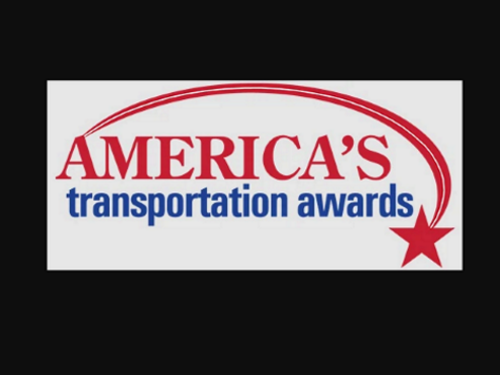According to a recent survey conducted by the Associated General Contractors of America and software firm HCSS found that 55 percent of highway contractors said that motor vehicles had crashed into their construction work zones during the past year.
[Above photo by NMDOT]
The association said it polled over 900 highway construction firms for its 2023 work zone safety study between April and May this year.
“Elected and appointed officials are not doing enough to protect workers and motorists in highway work zones,” said Ken Simonson, the association’s chief economist and author of the annual survey, in a statement. “Our transportation networks may be invaluable, but the lives of workers and motorists are priceless.”
According to the survey results, motorists are in even greater danger from highway work zone crashes than construction workers. While 28 percent of contractors participating in the survey experienced crashes that resulted in injury to construction workers, more than twice as many firms – 59 percent – reported experiencing a crash in which drivers or passengers were injured.
Work zone crashes also are twice as likely to result in fatalities to drivers or passengers as construction workers. While 8 percent of contractors in the survey report that construction workers were killed in work zone crashes, some 16 percent of respondents said drivers or passengers were killed in those crashes.
“In many cases, vehicle speeding contributes to these crashes in work zones,” said Steve McGough, president and CEO of HCSS. “Utilizing speed cameras with a zero-tolerance policy would go a long way to protect the traveling public and our workforce.”
[Editor’s note: The Federal Highway Administration’s Office of Operations recently issued a report regarding “Identification of National Work Zone Safety Objectives and Activities” as part of a broad effort on behalf of the U.S. Department of Transportation to improve roadway safety for all users – motorists, pedestrians, bicyclists, and highway workers alike – unveiled in January 2022.]
AGC’s Simonson noted that 97 percent of contractors reported in the survey that highway work zones are either as dangerous, or more dangerous, than they were a year ago. He added that more than half of contractors want automatic ticketing for speeding in work zones, with 79 percent wanting a greater police presence and 65 percent desiring stricter enforcement.
Based on its survey findings, AGC is calling on every state to prioritize education and enforcement to make work zones safer. The association wants every state to require new drivers to complete a work zone safety course, deploy more police to work zones, authorize speed cameras in those zones and set tougher penalties, like fines and points, for unsafe work zone driving.
“Nobody should die because our laws fail to penalize unsafe operations in work zones in the same way they punish drunk driving and stigmatize not using a seat belt,” Simonson added.
State departments of transportation are supporting a variety of programs and other initiatives to improve highway work zone safety as well.
For example, a recent study completed by the University of Missouri in February – one supported by the Missouri Department of Transportation – found that using a self-driving truck to follow a crewed vehicle has the potential to reduce worker injuries in highway work zones.
That study noted that MoDOT uses truck-mounted “crash cushions,” known as truck mounted attenuators or TMAs, positioned at the end of mobile work zones to absorb the impact of a potential crash. The school’s researchers found, though, if the vehicle equipped with the TMA is a self-driving truck, more injuries could be avoided.
In April, the New York State Department of Transportation and New York State Thruway Authority jointly launched an “Automated Work Zone Speed Monitoring” pilot program that aims to slow down motorists traversing highway work zones.
The pilot program involved a total of 30 speed violation monitoring systems that rely on radar technology positioned in active work zones along New York State highways, with 20 of them located on NYSDOT-maintained roads and the remaining 10 on New York State Thruway-managed roads.
Meanwhile, the Oregon Department of Transportation’s Work Zone Safety Task Force is capturing data on “near misses” to lessen the risk. A new online reporting system allows an Oregon DOT employee or contractor with a smart phone and a QR code to report a near-miss incident anonymously.
While the system is in development and reporting is voluntary – meaning under-reporting is likely, the agency pointed out – the pilot testing period from August to December 2022 recorded 133 near-miss reports, or an average of 27 incidents per month. Of those, two-thirds involved a vehicle nearly hitting equipment or crews, or a driver going around a flagger, all extremely risky behaviors for people in the vehicles and the work zones, Oregon DOT said.
 Top Stories
Top Stories
AASHTO Offers Advice for New USDOT Strategic Plan
September 12, 2025 Top Stories
Top Stories

